
The Centennial International Exhibition, officially the International Exhibition of Arts, Manufactures, and Products of the Soil and Mine, was held in Philadelphia, Pennsylvania, from May 10 to November 10, 1876. It was the first official world's fair to be held in the United States and coincided with the centennial anniversary of the Declaration of Independence's adoption in Philadelphia on July 4, 1776.
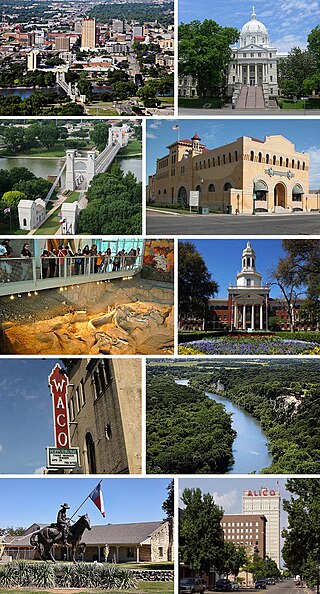
Waco is a city in and the county seat of McLennan County, Texas, United States. It is situated along the Brazos River and I-35, halfway between Dallas and Austin. The city had a U.S. census estimated 2023 population of 144,816, making it the 24th-most populous city in the state. The Waco metropolitan statistical area consists of McLennan, Falls and Bosque counties, which had a 2020 population of 295,782. Bosque County was added to the Waco MSA in 2023. The 2023 U.S. census population estimate for the Waco metropolitan area was 304,865 residents.

William Cowper Brann was an American journalist also known as Brann the Iconoclast. During his life, he gained a reputation as a "brilliant though vitriolic editorialist." He defended lynching Black men accused of rape and called for opponents of this type of mob violence to be castrated.

Piedmont Park is an urban park in Atlanta, Georgia, United States, located about 1 mile (1.6 km) northeast of Downtown, between the Midtown and Virginia Highland neighborhoods. Originally the land was owned by Dr. Benjamin Walker, who used it as his out-of-town gentleman's farm and residence. He sold the land in 1887 to the Gentlemen's Driving Club, who wanted to establish an exclusive club and racing ground for horse enthusiasts. The Driving Club entered an agreement with the Piedmont Exposition Company, headed by prominent Atlantan Charles A. Collier, to use the land for fairs and expositions and later gave the park its name.
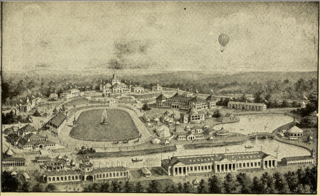
The Cotton States and International Exposition was a world's fair held in Atlanta, Georgia, United States in 1895. The exposition was designed "to foster trade between southern states and South American nations as well as to show the products and facilities of the region to the rest of the nation and Europe."

Old East Dallas is a community consisting of several neighborhoods in east Dallas, Texas, (USA). In 1890, the city was annexed into Dallas, making Dallas the largest city in Texas. Contrary to what its name implies, East Dallas is rich with culture both old and new; after the annexation, entrepreneurs and creatives occupied then shabby warehouses, turning them into clubs and venues, bringing culture and many social scenes that still thrive today in what is now Deep Ellum, among other neighborhoods of this district.

The Baylor Bears football team represents Baylor University in Division I FBS college football. They are a member of the Big 12 Conference. After 64 seasons at the off-campus Baylor Stadium, renamed Floyd Casey Stadium in 1988, the Bears opened the new on-campus McLane Stadium for the 2014 season.
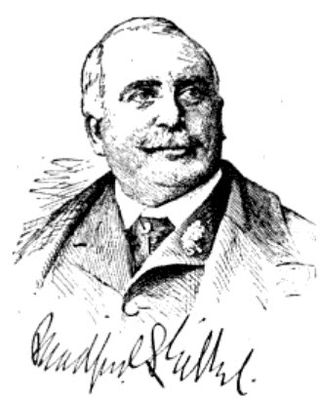
Bradford Lee Gilbert was a nationally active American architect based in New York City. He is known for designing the Tower Building in 1889, the first steel-framed building anywhere and the first skyscraper in New York City. This technique was soon copied across the United States. He also designed Atlanta's Cotton States and International Exposition of 1895, the Flatiron Building in Atlanta, and many railroad stations.
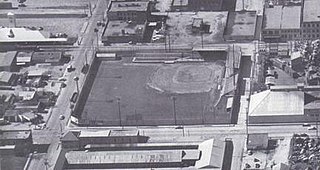
Katy Park was a baseball park located in Waco, Texas, and was used by many minor league baseball teams as well as the Baylor Bears for a short time.

Carroll Field was an exhibition ground in Waco, Texas, owned by Baylor University; the Baylor Bears football program played games there from 1902 to 1925, with the exception of 1906 when football was banned on campus, and from 1930 to 1935. Following the construction of the Carroll Science Building in 1902, the field was located between the building and Waco Creek; the field took over as the location of football games from an unnamed field adjacent to and northwest of Old Main. Lee Carroll made a donation for the field to be constructed, and his father and grandfather had also donated to build the Carroll Science Building and Carroll Library. From 1926 to 1929, Baylor football games were played at the Cotton Palace in Waco. During Baylor's first season, they were beat 33–0 by Texas A&M, but the Waco Times-Herald attempted to make the loss positive, saying, "For an eleven many of whose players did not know the shape of the oval until this season, Baylor put up a fair exhibition.”

The Grand Central Palace was an exhibition hall in Midtown Manhattan, New York City. The name refers to two structures, both located on Lexington Avenue near Grand Central Terminal.
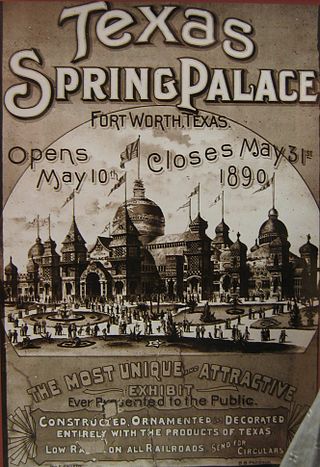
The Texas Spring Palace was a regional agricultural and immigration exposition in Fort Worth designed to attract settlers and investors to Texas. Built in 1889 and lasting only two seasons, the fair's main structure was destroyed in a massive fire the following year and never rebuilt.
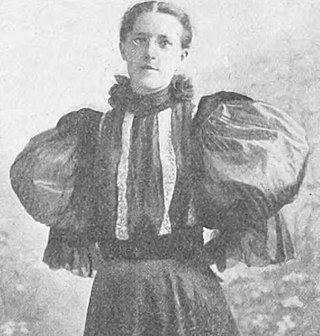
Elise Mercur, also known as Elise Mercur Wagner, was Pittsburgh, Pennsylvania's first female architect. She was raised in a prominent family and educated abroad in France and Germany before completing training as an architect at the Pennsylvania Academy of the Fine Arts. Her first major commission, for the design of the Woman's Building for the Cotton States and International Exposition of Atlanta, was secured in 1894, while she was apprenticed to Thomas Boyd. It was the first time a woman had headed an architectural project in the South. After completing a six-year internship, she opened her own practice in 1896, where she focused on designing private homes and public buildings, such as churches, hospitals, schools, and buildings for organizations like the YMCA/YWCA.
The following is a timeline of the history of the city of Waco, Texas, US.
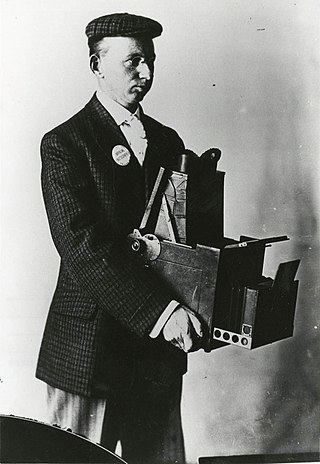
Fred A. "Gildy" Gildersleeve was an American photographer. His work helped pioneer aerial photography, panoramas, and light manipulation techniques. After settling in Waco, Texas, in 1905, Gildersleeve captured thousands of photographs depicting the city as it experienced an unprecedented period of growth. He first received recognition for his images of a biplane circling the Amicable building in 1911 and the Cotton Palace.
The 1928 Baylor Bears football team represented Baylor University in the Southwest Conference (SWC) during the 1928 college football season. In their third season under head coach Morley Jennings, the Bears compiled an 8–2 record, tied for third place in the conference, and outscored opponents by a combined total of 219 to 54. They played their home games at Cotton Palace in Waco, Texas. A. E. "Pete" Jones was the team captain.
The 1927 Baylor Bears football team represented Baylor University in the Southwest Conference (SWC) during the 1927 college football season. In their second season under head coach Morley Jennings, the Bears compiled a 2–7 record, finished in last place in the conference, and were outscored by opponents by a combined total of 139 to 74. They played their home games at Cotton Palace in Waco, Texas. Wesley F. Weed was the team captain.
The 1925 Baylor Bears football team was an American football team that represented Baylor University in the Southwest Conference (SWC) during the 1925 college football season. In its sixth and final season under head coach Frank Bridges, the team compiled a 3–5–2 record, finished in last place in the conference, and was outscored by a total of 115 to 79. The team played its home games at the Cotton Palace in Waco, Texas. Homer D. Walker was the team captain.

Kushibiki Yumindo, also given as Yumeto, Yumito, and Yumeno, was a Japanese impresario responsible for organizing many international exhibitions in the late 19th and early 20th centuries.
The Waco Tigers were a minor league baseball team based in Waco, Texas. Between 1892 and 1905, the Tigers played in four non–consecutive seasons as members of the Texas League, with three of the seasons being partial seasons of play. The Waco Tigers hosted home minor league games at Padgitt Park until 1905, when the Tigers began play at Katy Park. The Tigers were succeeded by the 1906 Waco Navigators, who continued Waco's membership in the Texas League through 1919.

















